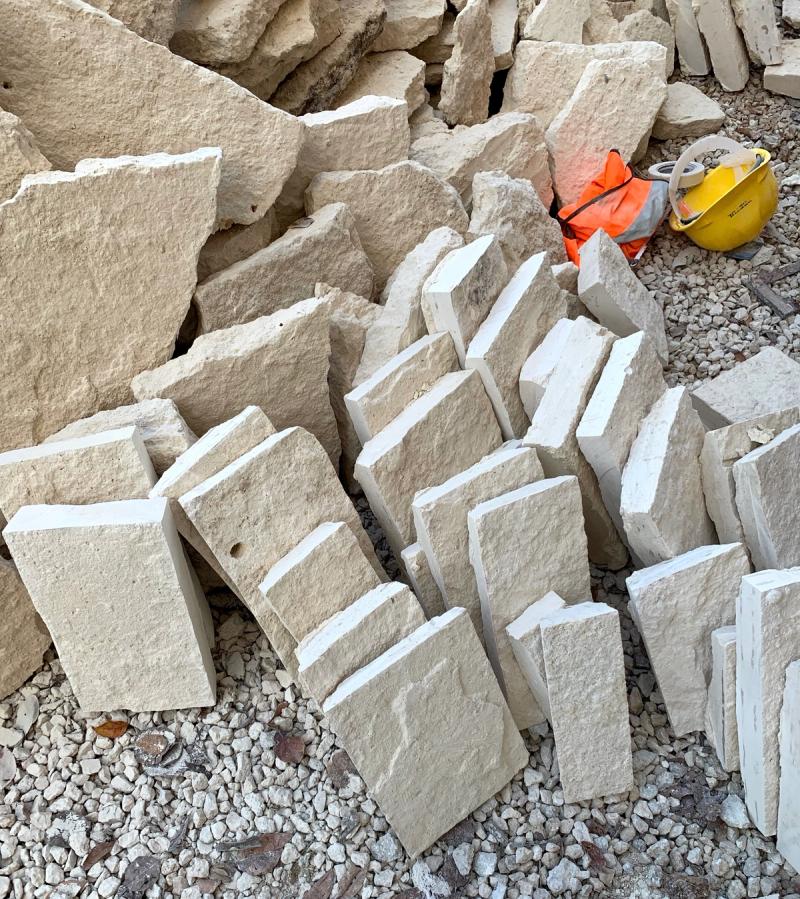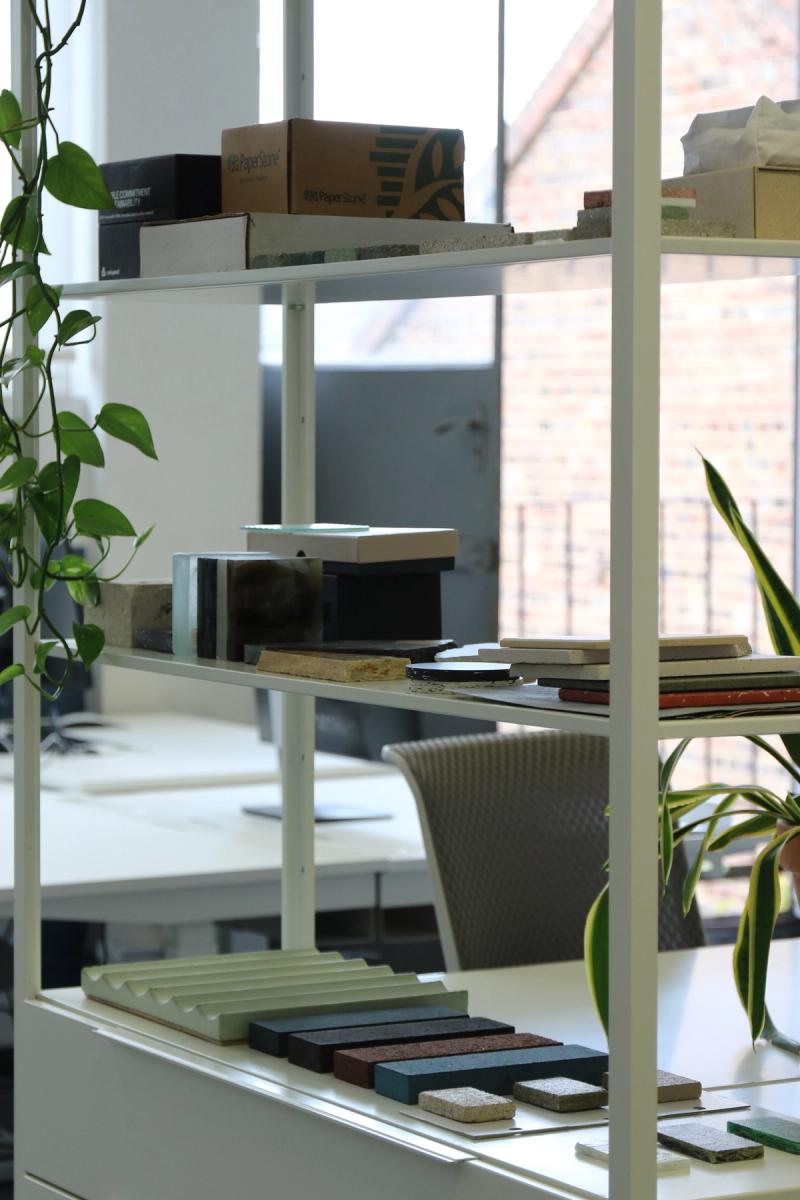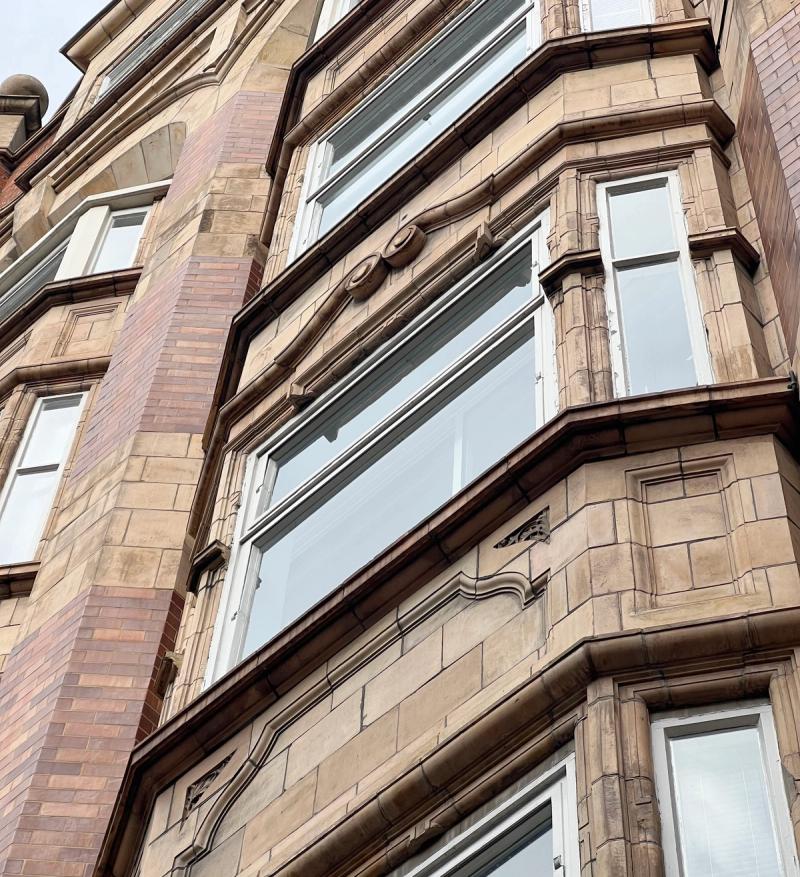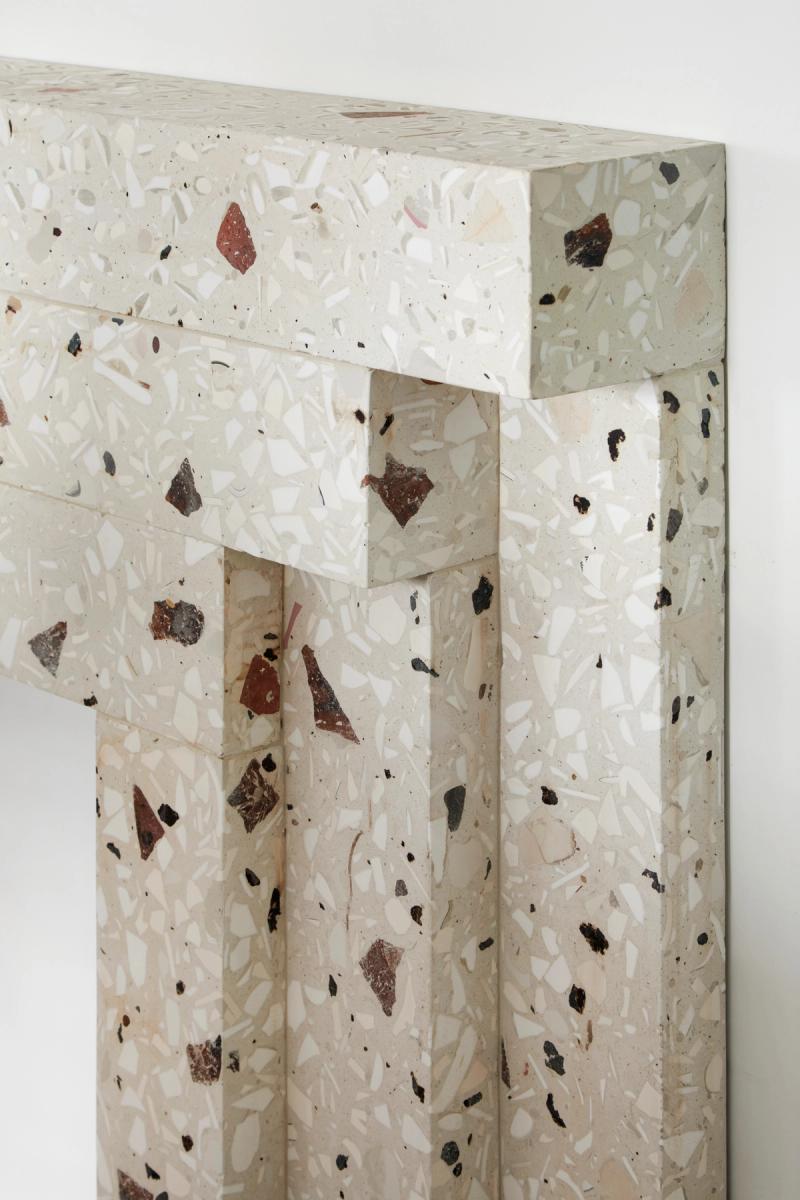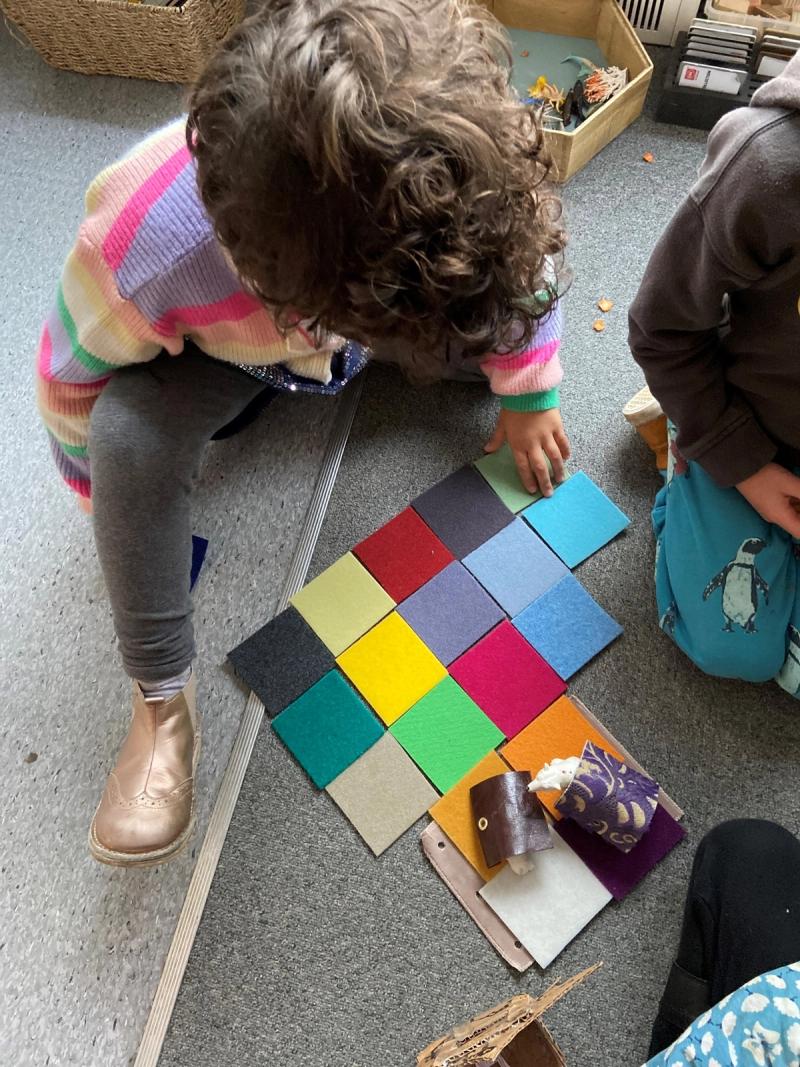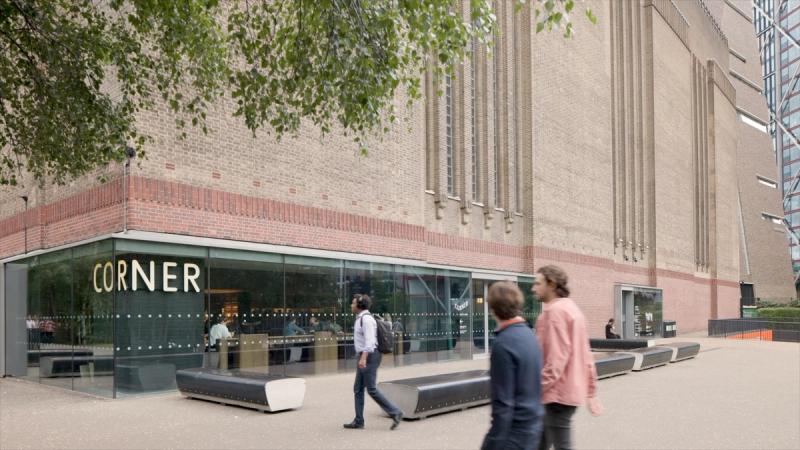Holland Harvey has collaborated with Gail’s bakery for over a decade, starting with refurbishing the original Hampstead bakery in 2013. Since then, we have delivered over 70 new bakeries across the UK, redefining the local bakery concept and enhancing community ties.
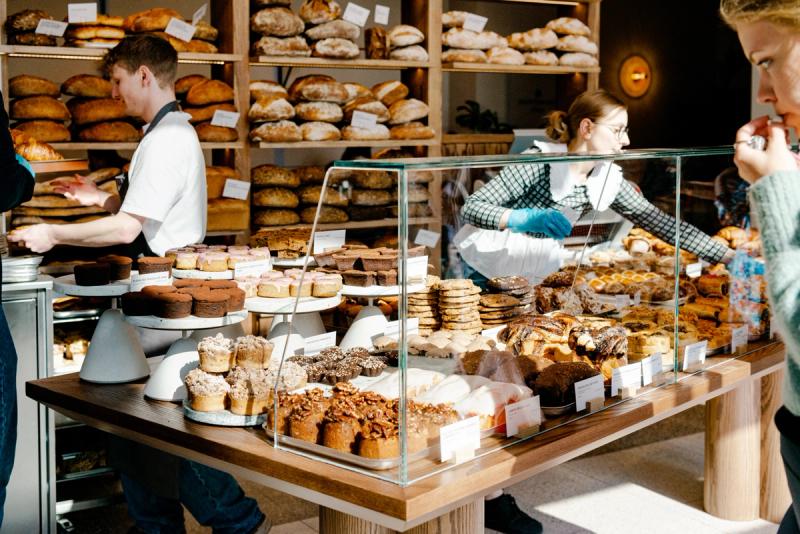
An abundant display of baked goods at Gail's Woking branch © Kat Antos-Lewis
Sustainability Initiatives
Gail’s, known for its fresh, handmade bread, launched the ‘Waste Not’ range in 2020 to combat food wastage. This range incorporates by-product ingredients from food-making processes, dough off-cuts, and surplus bread. For example, up to a third of the Waste-Less Sourdough contains porridge from the previous day’s bread. Surplus food is donated daily to over 95 local organisations and charities. The brand also prioritises sustainable sourcing, using UK produce such as cheese and butter from Quickes in Exeter and Brades milk from Lancashire, which reduces methane emissions through natural feed supplements.
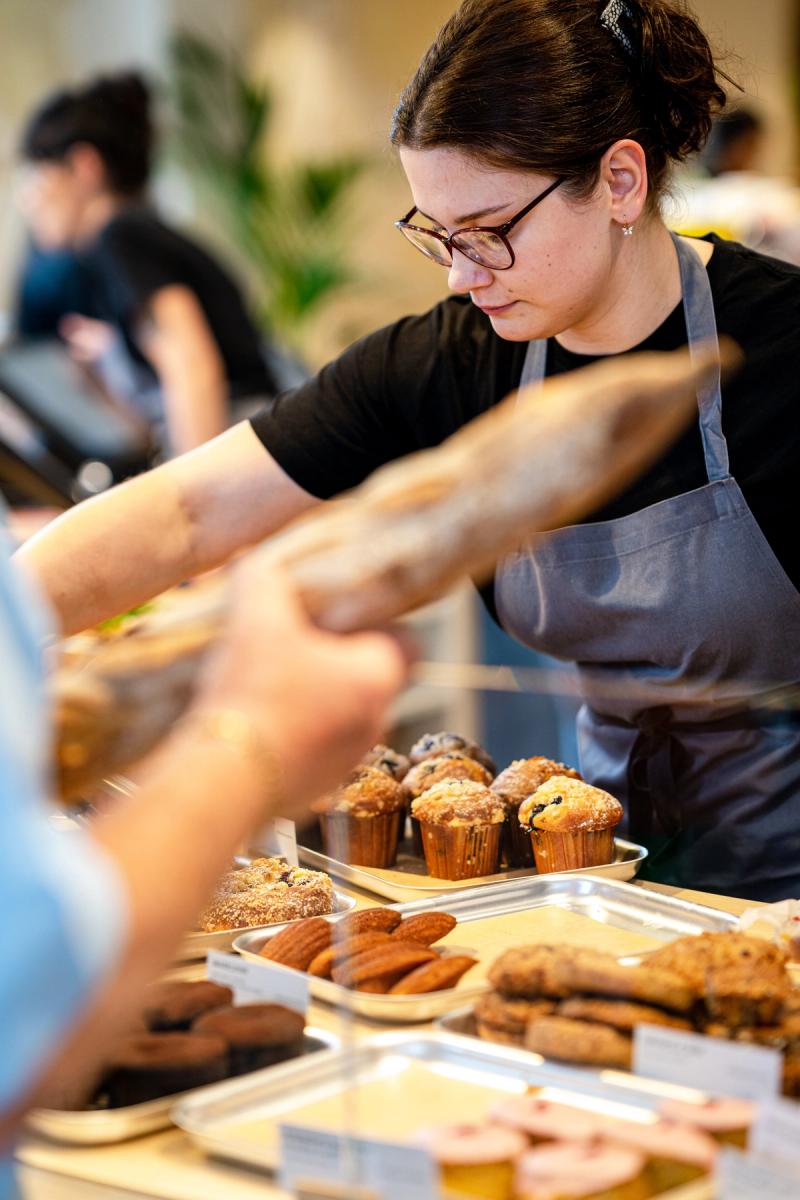
Staff at Gail's Didsbury © Kat Antos-Lewis
Design Philosophy
Holland Harvey designs spaces that reflect Gail’s values, creating comfortable and efficient environments. Design principles remain consistent (bread in the window, coffee machine up front, seating at the back), but each bakery’s format evolves through an iterative process. The bakeries are located in diverse settings, from glass boxes at NEO Bankside to high street shops in Brighton, Brutalist colleges in Oxford, and former banks in Manchester.

Gail's Brentford is set within a grade II listed building © Kat Antos-Lewis
Material Reuse & Repurposing
Our design process emphasises minimal new finishes, preserving characterful features like raw plaster and original terrazzo or stone floors where practicable. Bakery trollies are repurposed as display shelving, reducing the need for new joinery and increasing operational efficiency. We consider repurposing existing fixtures before adding new elements. Gail’s stores furniture from old sites for reuse, reducing waste and its carbon footprint.

Original features of an old bank were preserved in Gail's Wanstead © Adrian Lambert
Sustainable Material Choices
Waste marble offcuts can be used as a patchwork surface or terrazzo, reducing landfill waste and carbon impact.
Plastics recycled from post-consumer waste can be turned into solid surfaces.
Cork, harvested without harming trees, is used for its durability and insulation properties, making it ideal for bakery surfaces and backrests.
Solid, sustainably sourced timber is preferred over veneers due to its longevity and antibacterial properties.
Ceramic tiles are preferred over porcelain due to their lower environmental impact. They are fired at lower temperatures, consuming less energy, and are easy to recycle.
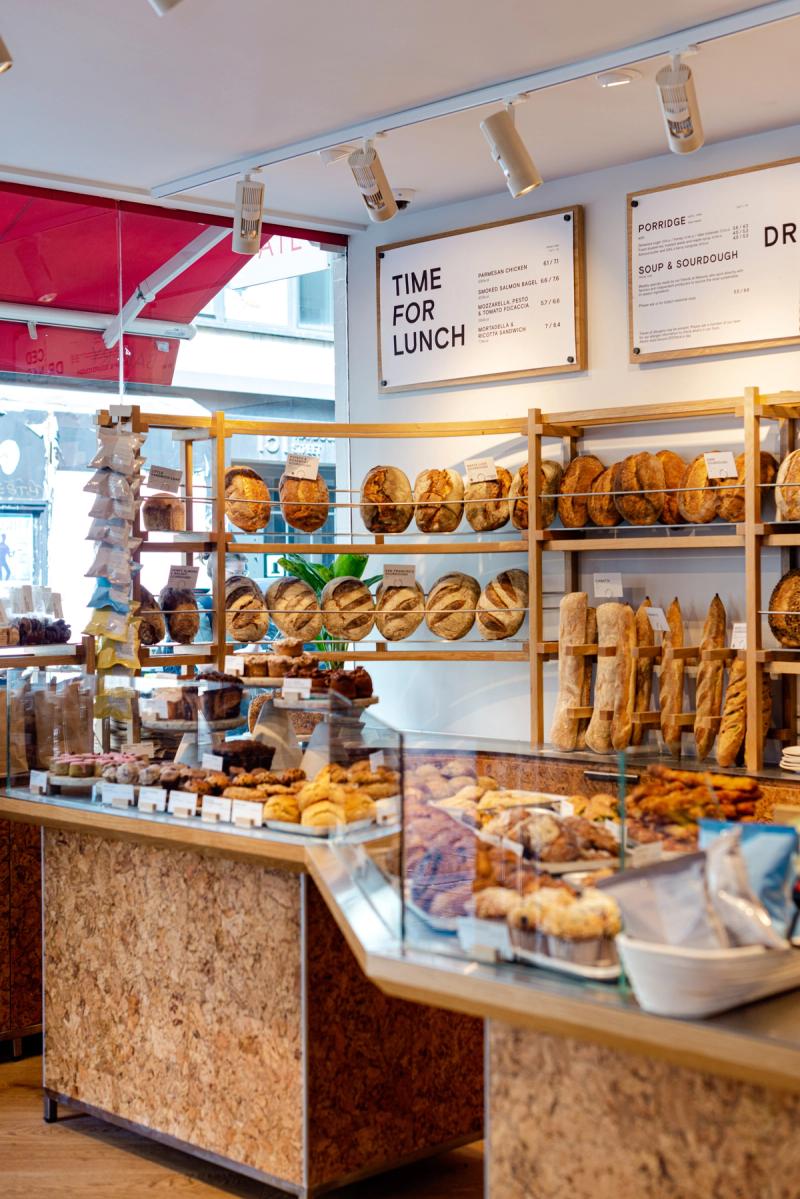
Cork counters and solid wood racking at Gail's Soho © Kat Antos-Lewis
Community Focus
Gail’s bakeries serve as community hubs, fostering connections among residents, tourists, and nomadic workers. Each bakery’s design considers the local context, incorporating historical and cultural elements. These stories are shared with bakery teams to engage customers and reflect the brand’s interest in local heritage.
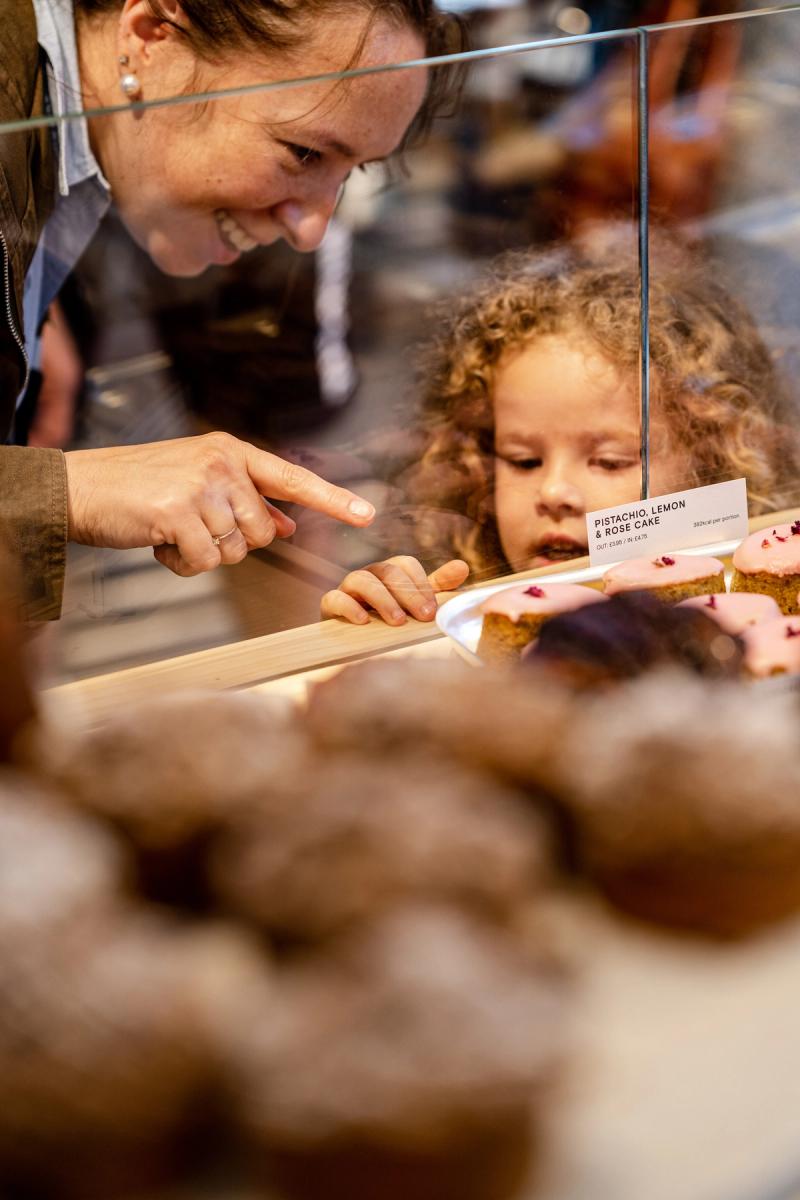
Local customers in Gail's Didsbury © Kat Antos-Lewis
Impact & Future Vision
Holland Harvey’s work with Gail’s demonstrates the potential of high-quality, local bakeries to foster community connections and promote sustainability. The popularity of Gail’s highlights a growing appreciation for sustainable food practices and the importance of communal spaces in strengthening social ties and fostering community.
Written by Jonathan Harvey
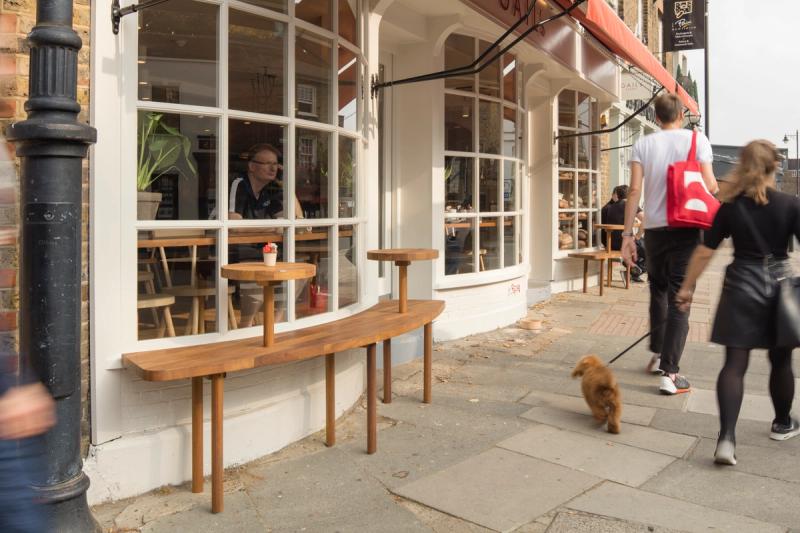
Gail's at the heart of the Highgate community © Adrian Lambert





